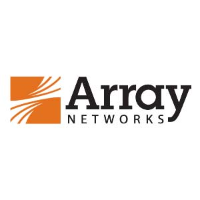 Array Networks Inc. today announced the release of the Monitoring and Reporting System (MARS), which provides highly granular in-depth monitoring and reporting for one or more physical or virtual Array APV Series Application Delivery Controllers (ADCs). MARS enables IT admins to ensure network uptime, application security, and a superior user experience by providing on-demand visibility into traffic patterns, potential server availability or responsiveness issues, handshake and authorization issues, and other indicators of risks to application security and server efficiency.
Array Networks Inc. today announced the release of the Monitoring and Reporting System (MARS), which provides highly granular in-depth monitoring and reporting for one or more physical or virtual Array APV Series Application Delivery Controllers (ADCs). MARS enables IT admins to ensure network uptime, application security, and a superior user experience by providing on-demand visibility into traffic patterns, potential server availability or responsiveness issues, handshake and authorization issues, and other indicators of risks to application security and server efficiency.
“IT departments the world over are under increasing pressure to maximize the performance and availability of applications and servers, as well as the overall user experience, in order to support greater productivity,” said Vinod Pisharody, Chief Technology Officer at Array Networks. “Through MARS, network administrators now have a powerful tool to proactively address problematic servers and other trends, and ensure a strong security posture appropriate for their organization.”
Available in Basic or Advanced versions to fit the needs of customers running as few as a single Array ADC or as many as 32 Array ADCs, MARS provides a centralized console with graphical dashboards of user and server behaviors as well as traffic managed by Array server load balancing. Because of the unique position of the APV Series in the network – in front of data and application servers – and due to their ability to decrypt SSL traffic at near wire speed, MARS can provide unique insights that allow network administrators to quickly spot trends and trouble spots and remediate as needed to ensure performance and user experience.
MARS is available as a virtual appliance for VMware environments or for Array’s AVX Series Network Functions Platform, and offers five standard dashboards that are customizable in the Advanced version:
-
HTTP Response Codes Dashboard – Provides visualization of server performance and optimizations as well as server error codes for fast diagnosis and remediation of problem areas
-
Cache Results Dashboard – Array ADCs can cache frequently requested information and pages in memory to speed response times. The dashboard provides an overview of uncached URLs that could benefit from caching, top users and requests, and other information to help administrators better manage data caching
-
Server Delay Dashboard – Displays server response times and highlights server delays to help pinpoint bottlenecks that decrease overall performance and impact the user experience
-
SSL Traffic Dashboard – Displays SSL/TLS versions and cipher suites utilized by traffic processed by the Array ADCs, giving the administrator insights to help configure and fine tune the organization’s security posture
-
Alerts Dashboard – Graphically represents trends, priorities, problematic IP addresses and other performance issues, and allows prioritization based upon impact and severity.



